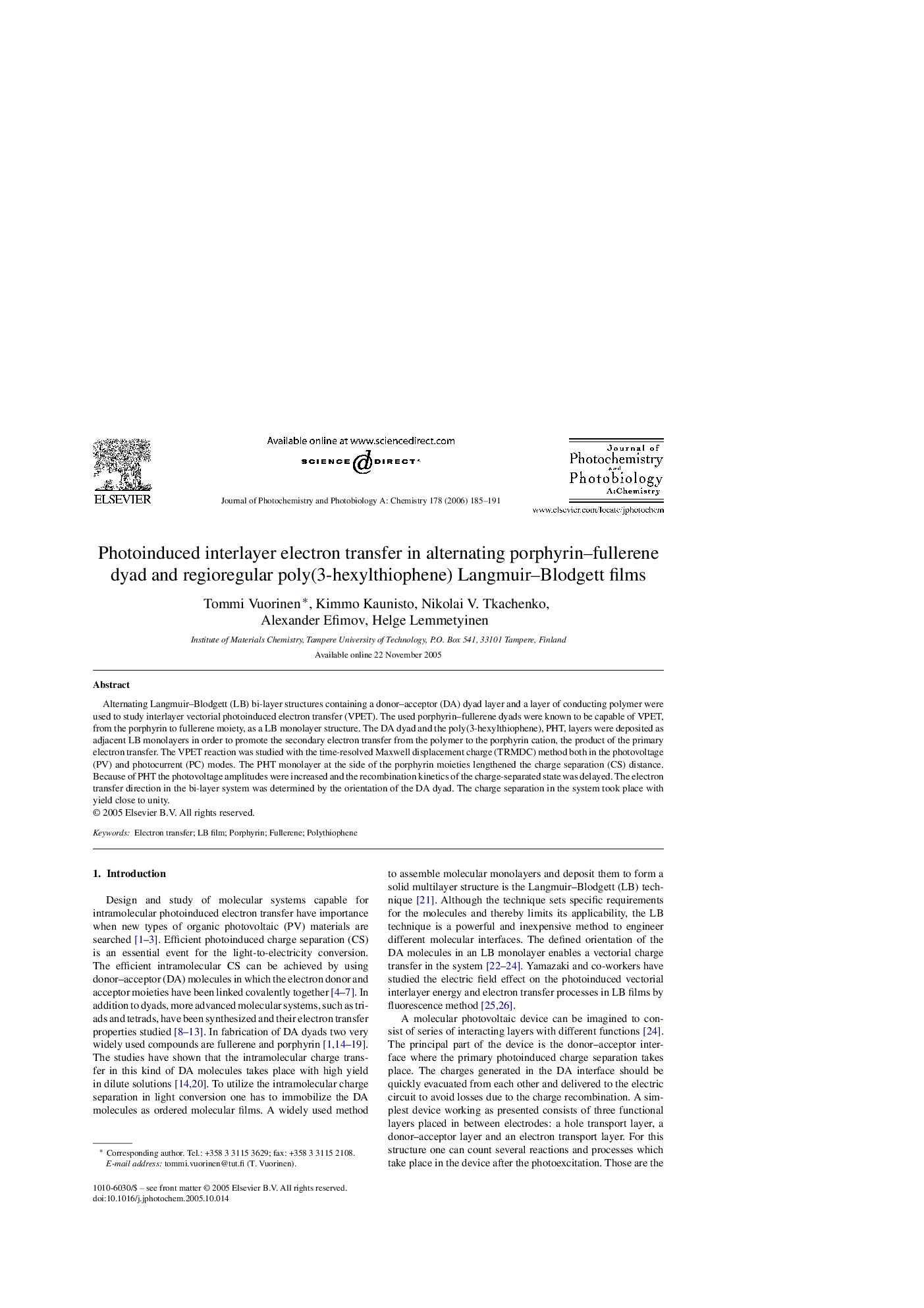| Article ID | Journal | Published Year | Pages | File Type |
|---|---|---|---|---|
| 29349 | Journal of Photochemistry and Photobiology A: Chemistry | 2006 | 7 Pages |
Alternating Langmuir–Blodgett (LB) bi-layer structures containing a donor–acceptor (DA) dyad layer and a layer of conducting polymer were used to study interlayer vectorial photoinduced electron transfer (VPET). The used porphyrin–fullerene dyads were known to be capable of VPET, from the porphyrin to fullerene moiety, as a LB monolayer structure. The DA dyad and the poly(3-hexylthiophene), PHT, layers were deposited as adjacent LB monolayers in order to promote the secondary electron transfer from the polymer to the porphyrin cation, the product of the primary electron transfer. The VPET reaction was studied with the time-resolved Maxwell displacement charge (TRMDC) method both in the photovoltage (PV) and photocurrent (PC) modes. The PHT monolayer at the side of the porphyrin moieties lengthened the charge separation (CS) distance. Because of PHT the photovoltage amplitudes were increased and the recombination kinetics of the charge-separated state was delayed. The electron transfer direction in the bi-layer system was determined by the orientation of the DA dyad. The charge separation in the system took place with yield close to unity.
